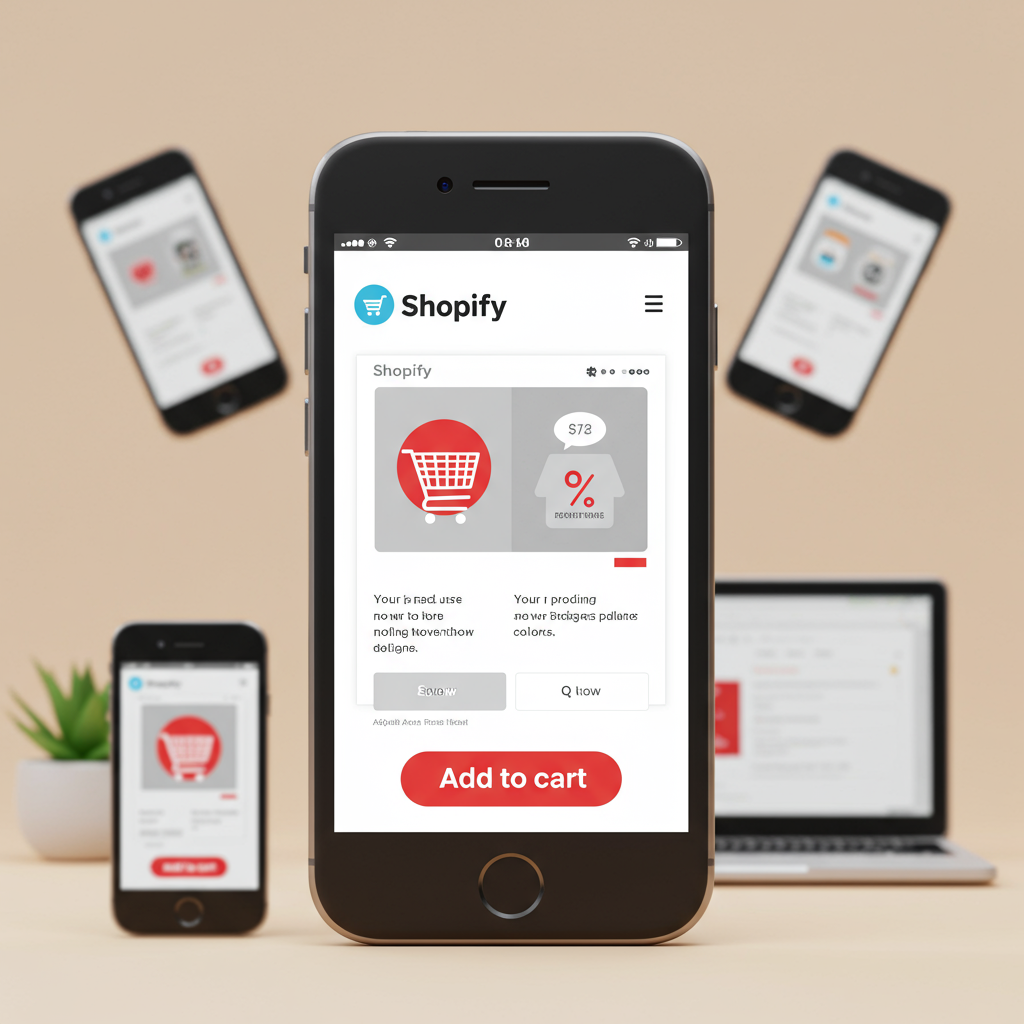My Essential Guide to Creating a Seamless Mobile-First Experience on Shopify
Hello fellow Shopify merchants! I’m here today to share some insights that I believe are absolutely crucial for your online success: designing a mobile-first Shopify store.
In today’s digital landscape, it’s no secret that the majority of online browsing and purchasing happens on mobile devices.
Think about it: how often do you reach for your phone to quickly check a product, compare prices, or make a spontaneous purchase? Probably quite often, right?
This shift in consumer behavior means that if your Shopify store isn’t optimized for mobile, you’re not just missing out on sales; you’re actively deterring potential customers.
A clunky, slow, or hard-to-navigate mobile experience can send a shopper straight to your competitor’s more responsive site.
My philosophy is simple: design for the smallest screen first, then scale up. This ‘mobile-first’ approach ensures that your core content and functionality are always prioritized.
It forces you to be ruthless with what’s truly essential, leading to a cleaner, faster, and more intuitive experience for everyone, regardless of their device.
So, where do we begin? The foundation of any great Shopify store is its theme.
When selecting a theme, I always recommend prioritizing those explicitly advertised as ‘responsive’ or ‘mobile-friendly.’
Shopify’s own theme store offers many excellent options that are built with responsiveness in mind, but always test them thoroughly.
Once your theme is chosen, image optimization becomes paramount. Large, unoptimized images are often the biggest culprits for slow loading times on mobile.
I make sure to compress all my images without sacrificing quality. Shopify has some built-in optimization, but external tools or apps can provide even better results.
Next, let’s talk about navigation. On a mobile screen, space is a luxury. Traditional desktop menus simply won’t work.
I find that the ‘hamburger’ menu icon (those three horizontal lines) is universally recognized and provides a clean way to tuck away extensive navigation.
Consider also implementing a sticky header or footer that keeps essential elements like the cart icon, search bar, or even a ‘Shop Now’ button always accessible.
Product pages are where the magic happens. For mobile, I focus on clear, concise product descriptions. Shoppers are often scanning, not reading lengthy paragraphs.
High-quality product images are non-negotiable. Ensure they are zoomable and load quickly. A good gallery allows users to swipe through easily.
The ‘Add to Cart’ button needs to be prominent, easy to tap, and ideally, sticky as the user scrolls down the product details.
Now, for the checkout process – this is where many mobile sales are lost. My goal is to make it as frictionless as humanly possible.
I enable guest checkout to remove the barrier of account creation. Pre-filling forms where possible, like city and state based on zip code, is a huge time-saver.
Offer multiple payment options, including mobile-friendly ones like Shop Pay, Apple Pay, Google Pay, and PayPal. The fewer steps, the better.
After implementing these changes, rigorous testing is essential. I test my store on various mobile devices and screen sizes, not just emulators.
I also use tools like Google’s Mobile-Friendly Test and PageSpeed Insights to identify areas for improvement.
Remember, mobile-first design isn’t a one-time task; it’s an ongoing process. Monitor your mobile analytics in Shopify and Google Analytics.
See where users are dropping off, what pages are slow, and what elements are causing friction. Then, iterate and improve.
What are your biggest challenges or successes when it comes to optimizing your Shopify store for mobile? I’d love to hear your thoughts!
Finally, consider the future. Technologies like Progressive Web Apps (PWAs) can offer an app-like experience directly from the browser, enhancing speed and engagement.
While not a standard Shopify feature, exploring PWA solutions or even Accelerated Mobile Pages (AMP) for your blog content can give you an edge.
In conclusion, embracing a mobile-first strategy for your Shopify store isn’t just a trend; it’s a necessity for survival and growth in today’s market.
By prioritizing speed, simplicity, and user experience on mobile, you’re not just building a better website; you’re building a more successful business.
I encourage you to take these steps, review your current mobile performance, and start optimizing today. Your customers (and your sales figures) will thank you.






